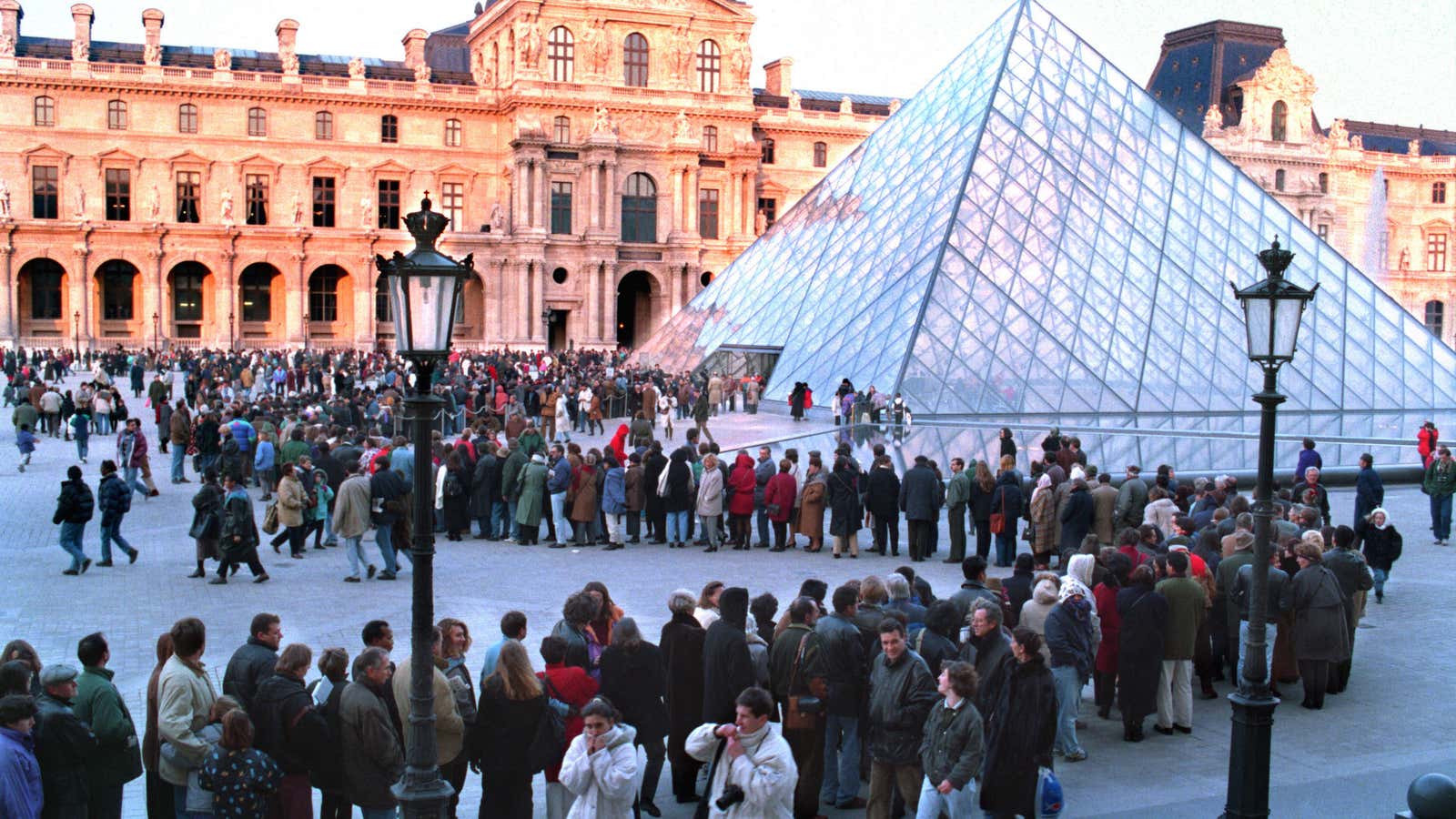The canon of Western art is replete with images of the sublime and inspirational. But it also includes myriad pieces that depict violence, racial injustice, and pain—from Nicolas Poussin’s Abduction of the Sabine Women to Picasso’s Guernica to Jacob Lawrence’s Migration Series. Such art forces viewers to confront what makes us uncomfortable. We learn the value of looking closely at things that we don’t like or understand—a habit that many of us otherwise seek to avoid.
As an instructor in visual analysis, I believe that examining art with a critical eye and an appreciation for artists’ perspectives is an invaluable skill. In doing so, the viewer can actually refine the lens through which he or she sees the world. In the age of Photoshop perfection and Snapchat ephemera, I want more people to practice looking at what appears ungainly, misshapen, disturbing, and cruel—all the more so if they feel personally affronted by it. Learning to thoughtfully move past these reactions can teach us more effective ways to contend with the economic, political, and cultural injustices that we face today.
Some critics have argued that contemporary art is not doing enough to push us toward questions about social responsibility. In November 2014, critic A.O. Scott’s New York Times essay “Looking the Other Way” considered “what art has done and should do at this moment of political impasse, racial tension and economic crisis.” Scott suggested that today’s popular works were not up to the task. The accompanying illustration, which showed the backs of 10 paintings, implied that artists were “looking the other way.”
But a closer look at contemporary artwork finds ample examples that disprove Scott’s theory.
One of the most powerful is Heirlooms and Accessories, a triptych by Kerry James Marshall that is part of a traveling retrospective. Currently housed at the Museum of Contemporary Art Chicago, Marshall’s work is coming to The Metropolitan Museum of Art in the fall. Inspired by a famous 1930 photograph of a double lynching in Indiana, each of the panels contains an exquisite gold chain artfully suspended and anchored by a pendant containing a different woman’s photo. The women in Marshall’s triptych were all present during the lynching, but were photographed with their backs casually turned away from grim spectacle.
Marshall explained that while he was horrified and repulsed by the brutality of the murders of black men, it was the calm demeanor of the witnesses in the photograph that most appalled him. How ordinary it all seemed. The blasé expressions of the women belied the gravity and viciousness of the lynchings going on just behind them.
Marshall uses the double meaning of “accessory” to make a gut-wrenching point: Those present at the lynching were accessories to a double murder. An heirloom, meanwhile—such as a treasured necklace—is an object that is passed down from one generation to the next. Marshall’s heirlooms thereby implicate contemporary white Americans in the legacy of racial injustice and violence.
Astute observers of the piece will notice, too, that the backdrop in each of the panels includes the faintest outline–rendered almost to the point of invisibility–of the photograph’s lynching. The draping of each gold chain meanwhile eerily echoes the ropes that bear the weight of the dead men.
Searing in its indignation yet exquisite in its execution, Heirlooms and Accessories reminds us that works of art still offer us a profound opportunity to engage with difficult issues that lack simple solutions. The ability to view and discuss works of art that are designed to unnerve, disarm, and upset us—whether they be paintings, photographs, or sculptures—lays bare the need to continually confront complicated everyday issues. Practicing how to communicate more effectively when viewing the creative endeavors of others will help us address uncomfortable but essential social scenarios.
In this way, we can strengthen our visual intelligence, keep our eyes open, and talk about what we see–no matter how hard it is to look.
